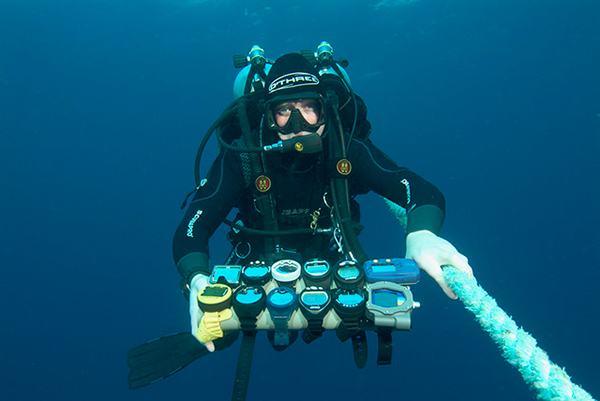It's All About the AlgorithmContents of this Issue: Tiger Beach, Grand Bahama Island Tiger Beach Dives Can Go Wrong Chest Compressions Can Save a Diver's Life Emperor Explorer, The Maldive Islands The Risks of Diving in Remote Places The Value of Using a Dive Travel Agent The Shark Whisperer on Netflix Take Clive Cussler on Your Deco Stop Orcas Have Been Trying to Feed People Editorial Office: Ben Davison Publisher and Editor Undercurrent 3020 Bridgeway, Suite 102 Sausalito, CA 94965 from the July, 2025 issue of Undercurrent
Subscriber Content Preview
Diving computers use an algorithm -- a mathematical calculation, a process, or set of rules -- to be followed to compute real-time decompression status during a dive. This century, no physicists have taken it upon themselves to write a new algorithm for dive computers. Manufacturers have merely tweaked the algorithms. Most use an algorithm based on the work of Swiss physicist Albert Buhlmann (died 1994), some with additional Reduced Bubble Gradient Model (RGBM) modifications by Los Alamos atomic physicist Bruce Wienke (died 2020). Others use the Pelagic DSAT algorithm, developed earlier by Rogers and Powell, a Haldanebased algorithm loosely based on data similar to the PADI Recreational Dive Planner, and more liberal (less cautious) than the Buhlmann derivatives. It allows a diver to stay down longer and come up faster, though it was intended for no-deco-stop dives to less than 100 feet deep, not the kind of profiles many sport divers use. Once a diver got into deco-stop diving, the stops tended to be punitive.... Subscribers: Read the full article here ; |

I want to get all the stories! Tell me how I can become an Undercurrent Online Member and get online access to all the articles of Undercurrent as well as thousands of first hand reports on dive operations world-wide
| Home | Online Members Area | My Account |
Login
|
Join
|
| Travel Index |
Dive Resort & Liveaboard Reviews
|
Featured Reports
|
Recent
Issues
|
Back Issues
|
|
Dive Gear
Index
|
Health/Safety Index
|
Environment & Misc.
Index
|
Seasonal Planner
|
Blogs
|
Free Articles
|
Book Picks
|
News
|
|
Special Offers
|
RSS
|
FAQ
|
About Us
|
Contact Us
|
Links
|
3020 Bridgeway, Ste 102, Sausalito, Ca 94965
All rights reserved.


